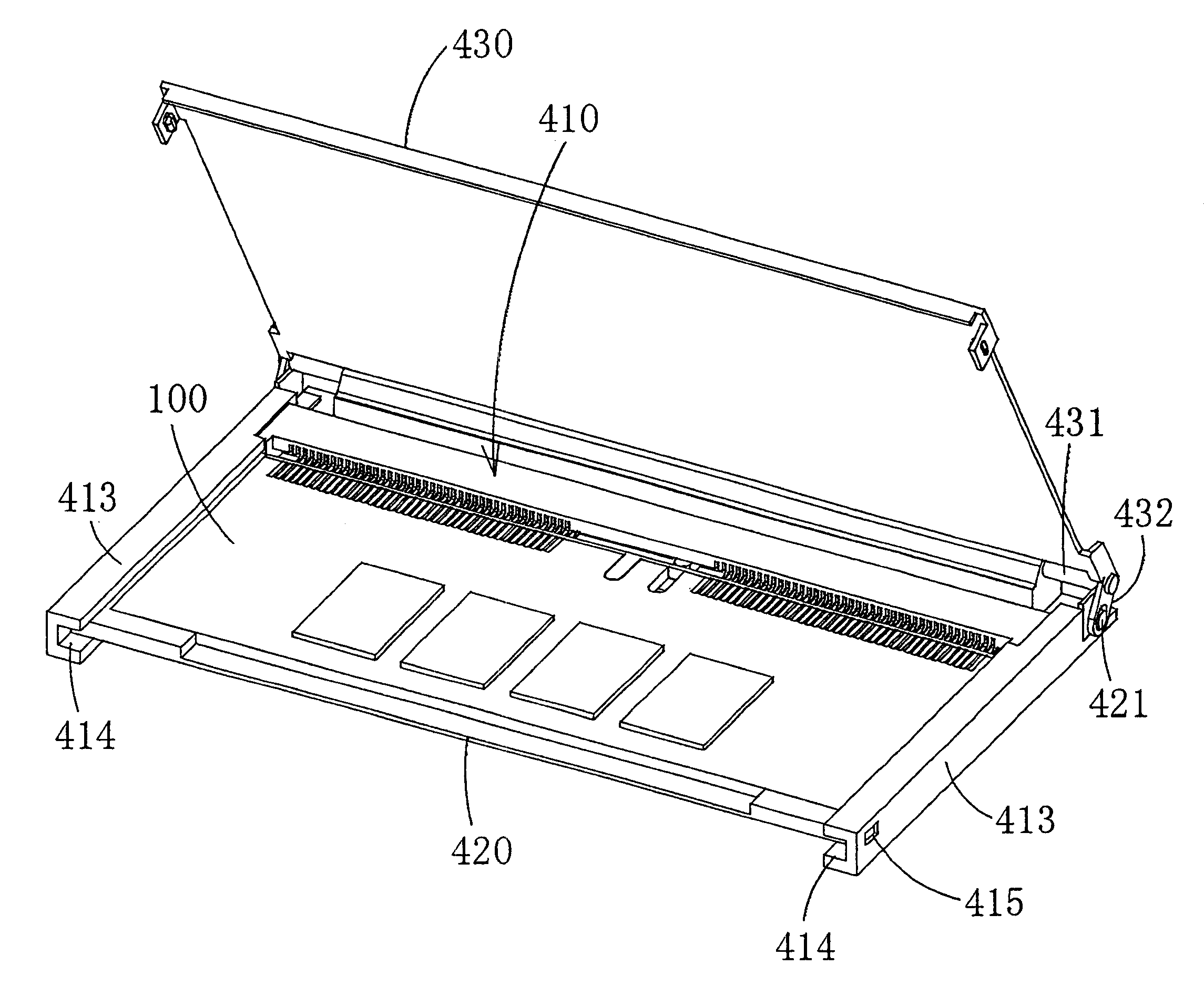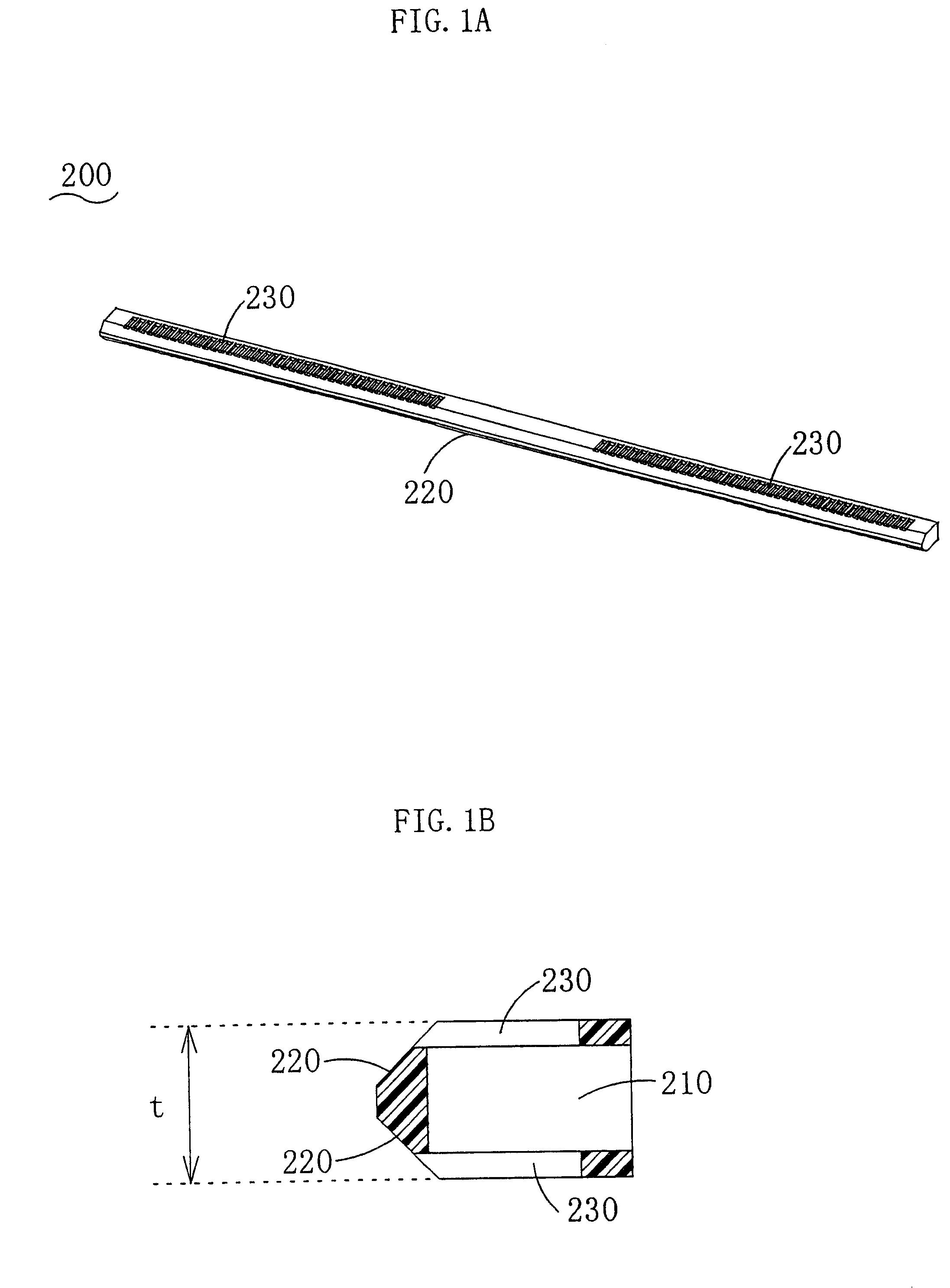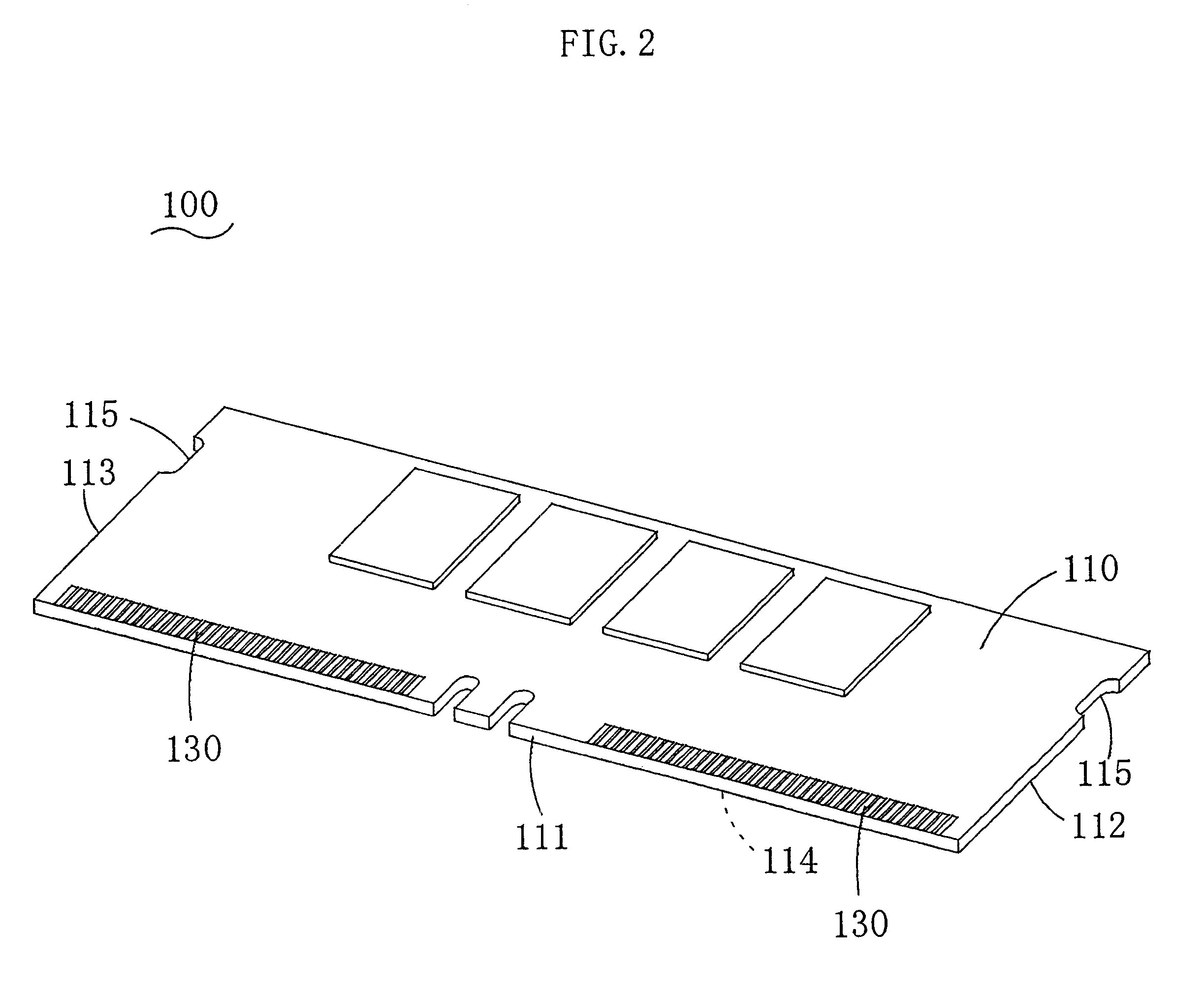Cap and low insertion force connector for printed circuit board
a technology of insertion force and printed circuit board, which is applied in the direction of coupling device connection, coupling parts engagement/disengagement, printed circuit aspects, etc., can solve the problems of reducing reducing the workability of the connection, and affecting the reliability of the connector
- Summary
- Abstract
- Description
- Claims
- Application Information
AI Technical Summary
Benefits of technology
Problems solved by technology
Method used
Image
Examples
first embodiment
FIG. 1A through FIG. 3B show the cap. FIG. 2 shows a printed circuit board 100 that is to be connected to the connector. Conductive pads 130 being made of a conductive material are arranged on both the face and the back of the front side 111 of a rectangular board 110. In addition to this, the present invention is applicable to printed circuit boards wherein conductive pads are provided only on the face of the front side of the board and printed circuit boards wherein conductive pads are provided only on the back of the front side of the board. In this embodiment, semiconductor chips 120 are mounted on the board 110, but the present invention is also applicable to printed circuit boards wherein no semiconductor chips are mounted. If necessary, notches 115 that are concaved in the left side 112 and the right side 113 of the printed circuit board 100. For the convenience of description, the marks used for the front side, sides, bottom, etc. of the board 110 are intactly used as the ma...
second embodiment
With the arrangement of the second embodiment, when the front side 111 of the printed circuit board 100 is inserted into the cap 200 being fitted to the connector 300 and the printed circuit board 100 is pushed towards the contacts 312a, 312b, the front side 111 thereof will be pushed into the contacts. When the printed circuit board 100 is pulled, the cap 200 and the printed circuit board 100 will be withdrawn from the contacts. When the printed circuit board 100 is pulled further, the printed circuit board 100 will be withdrawn from the cap 200. Thus the insertion and withdrawal of the printed circuit board 100 can be done with ease. Moreover, as the cap 200 is fitted to and is integral to the connector 300, handlability of the cap 200 is excellent.
FIG. 18 through FIG. 29B show the third embodiment being an embodiment of the connector according to the present invention. This connector 400 is to connect the printed circuit board 100 wherein, as described above, conductive pads 130 ...
third embodiment
This third embodiment or connector for printed circuit board 400 is mounted on the counterpart board 600 by, for example, soldering the solder tails of the contacts 412a, 412b onto the counterpart board 600 and, if necessary, fixing the connector body 410 onto the counterpart board 600 by means of reinforcing tabs. To fit the printed circuit board 100 into the connector 400, the printed circuit board 100 is placed on the slider 420 when the rear end of the cover 430 is up (refer to FIG. 23 through FIG. 27B), then the rear end of the cover 430 is lowered. The slider 420 will move forward and the front side 111 of the printed circuit board 100 will be inserted into the contacts 412a, 412b. When the cover 430 is put over the printed circuit board 100 and engaged to the arms 413, the printed circuit board 100 will be sandwiched by the slider 420 and the cover 430 and held in the connection position (refer to FIG. 28 through FIG. 29B). In this case, positioning of the printed circuit boa...
PUM
 Login to View More
Login to View More Abstract
Description
Claims
Application Information
 Login to View More
Login to View More - R&D
- Intellectual Property
- Life Sciences
- Materials
- Tech Scout
- Unparalleled Data Quality
- Higher Quality Content
- 60% Fewer Hallucinations
Browse by: Latest US Patents, China's latest patents, Technical Efficacy Thesaurus, Application Domain, Technology Topic, Popular Technical Reports.
© 2025 PatSnap. All rights reserved.Legal|Privacy policy|Modern Slavery Act Transparency Statement|Sitemap|About US| Contact US: help@patsnap.com



